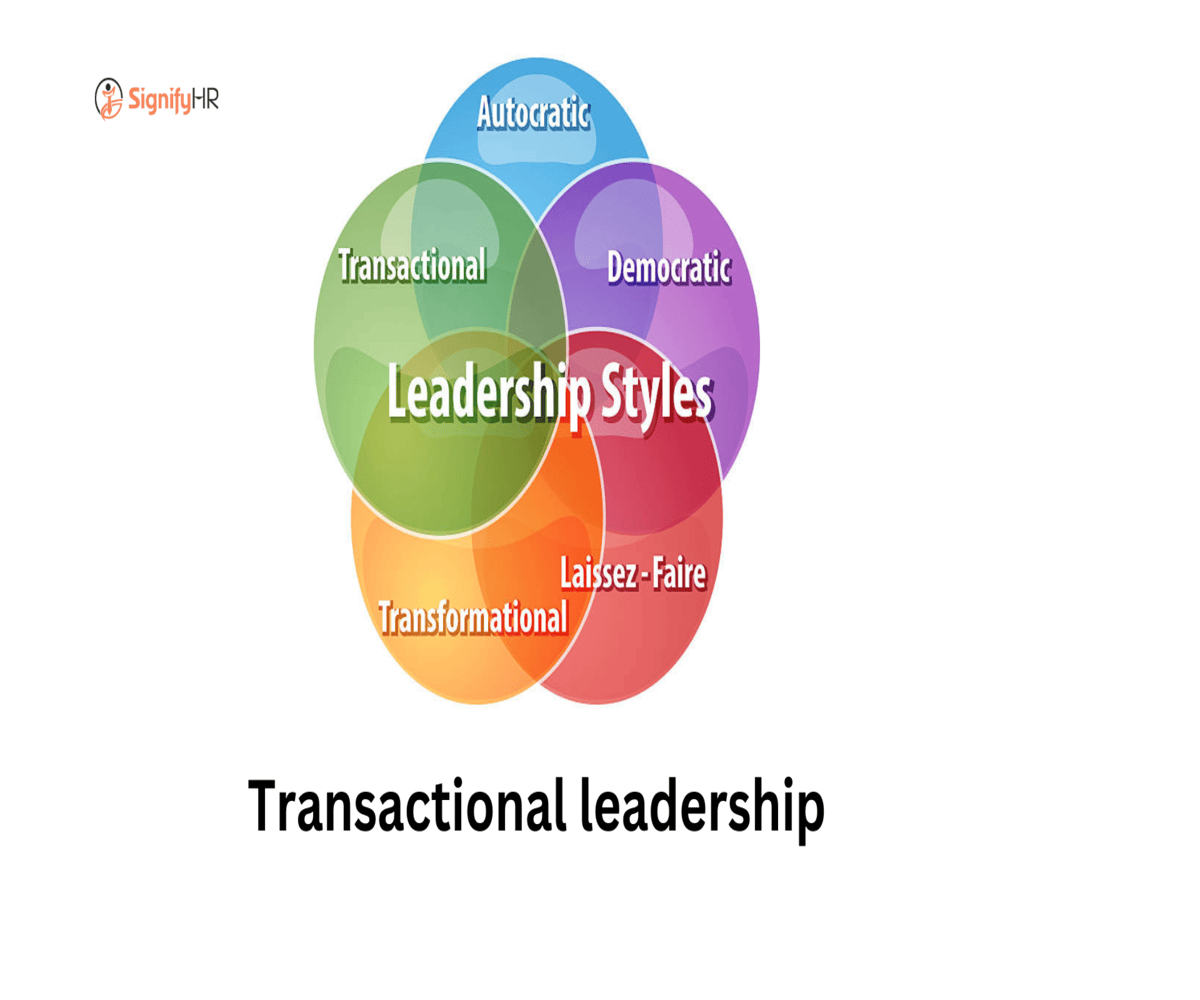Introduction Transactional leadership
Transactional leadership is a management style that emphasizes structure, supervision, and performance-based rewards. It is centered around maintaining order, achieving short-term goals, and ensuring efficiency within an organization. This leadership approach is commonly found in business environments, military settings, and large-scale operations where well-defined roles and responsibilities are critical.
Key Learning Objectives
- Understand the principles and characteristics of transactional leadership.
- Explore the benefits and challenges of this leadership style.
- Analyze real-world examples of transactional leaders and their impact.
- Learn how to implement transactional leadership effectively in business settings.
- Compare transactional leadership with other leadership styles.
1. Characteristics
a. Structured Management Approach
- Leaders establish clear goals, policies, and procedures.
- Employees are expected to follow set guidelines and instructions.
b. Performance-Based Rewards and Punishments
- Employees receive rewards for meeting targets and penalties for non-compliance.
- Incentives may include bonuses, promotions, or recognition.
c. Focus on Short-Term Goals
- Leadership is oriented towards achieving immediate objectives.
- Suitable for organizations requiring stability and consistency.
d. Hierarchical Leadership Structure
- Decision-making follows a top-down approach.
- Employees report to supervisors who ensure adherence to tasks.
Diagram: Structure of Transactional Leadership
CEO
|
----------------
| |
Manager A Manager B
| |
Employees Employees2. Benefits
a. Clear Roles and Expectations
- Employees understand their duties and responsibilities.
- Reduces ambiguity and increases accountability.
b. Efficient and Predictable Outcomes
- Standardized processes ensure consistency in results.
- Enhances productivity and organizational stability.
c. Motivates Employees Through Rewards
- Performance-based incentives encourage high efficiency.
- Helps maintain discipline and focus on objectives.
d. Ideal for Large Organizations and Structured Environments
- Works well in corporate settings, military operations, and manufacturing units.
- Ensures smooth workflow with minimal disruptions.
Diagram: Benefits of Transactional Leadership
+ Clear Expectations + Efficiency
+ Motivation + Stability3. Challenges
a. Limited Employee Creativity and Innovation
- Employees follow predefined rules, restricting creativity.
- May not be suitable for industries requiring innovation.
b. Risk of Employee Burnout
- Strict targets and constant supervision may cause stress.
- Employees may feel undervalued if creativity is ignored.
c. Resistance to Change
- Rigid structures make adapting to new trends difficult.
- Employees may struggle in dynamic business environments.
d. Overemphasis on Rewards and Penalties
- Employees may focus solely on rewards rather than intrinsic motivation.
- Punitive measures may lead to decreased morale and disengagement.
4. Real-World Examples of Transactional Leaders
a. Bill Gates (Microsoft Founder)
- Focused on structured processes and efficiency.
- Established a performance-driven work culture at Microsoft.
b. Jack Welch (Former CEO of General Electric)
- Implemented performance-based rewards and rigorous evaluations.
- Prioritized structured business processes and high performance.
c. Military and Government Leadership
- Transactional leadership is widely used in military organizations.
- Ensures discipline, accountability, and adherence to protocols.
5. Implementing Transactional Leadership in Business
a. Establish Clear Goals and Expectations
- Define specific job roles and performance metrics.
- Ensure employees understand their responsibilities.
b. Implement a Reward-Based System
- Provide incentives for employees who meet or exceed targets.
- Use bonuses, promotions, and recognition as motivational tools.
c. Maintain a Structured Work Environment
- Use strict procedures to ensure efficiency.
- Minimize workplace uncertainty by setting clear policies.
d. Ensure Regular Performance Monitoring
- Conduct frequent employee evaluations and feedback sessions.
- Identify areas for improvement and take corrective actions.
Diagram: Steps to Implement Transactional Leadership
1. Define Goals → 2. Monitor Performance → 3. Reward Success → 4. Maintain Structure6. Comparison with Other Leadership Styles
| Leadership Style | Focus | Employee Involvement | Best Used In |
|---|---|---|---|
| Transactional | Performance & Rewards | Low | Large Corporations, Military, Manufacturing |
| Transformational | Vision & Innovation | High | Startups, Creative Industries, R&D |
| Laissez-Faire | Autonomy & Freedom | Very High | Research, R&D, Creative Fields |
Conclusion
Transactional leadership is a highly effective approach for organizations that require structured processes, discipline, and performance-based motivation. While it may limit creativity, it ensures efficiency, predictability, and clear accountability.
For more expert insights on leadership strategies, management principles, and career development, explore SignifyHR’s learning resources today!
Lead with structure, drive efficiency, and achieve excellence!

